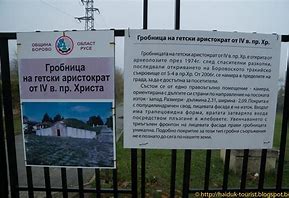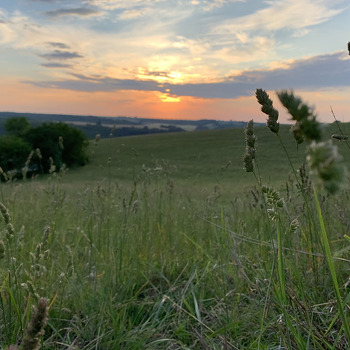Tomb of a Getae aristocrat
Overview
One of the most popular and visited tourist sites in the municipality of Borovo is the Tomb of a Getae aristocrat from the IV century BC, it is located in the central part of Borovo, under the High School "St. Kliment Ohridski ”. The discovery of the Silver Thracian Treasure draws the attention of specialists to the mound necropolis located near the town of Borovo. As early as the end of 1974, mounds 1 to 5 were excavated and studied. While archaeologists were working in them, the appetites of the treasure hunters focused on mounds 6, 7 and 8. In mound 6 they came across a masonry structure. Specialists from the Ruse Historical Museum are conducting rescue research, and in 1996 the tomb was excavated and opened to visitors. The inconvenience of visits comes from the fact that it is located in a mound, which is 5 km away from the city, in the middle of the fields, which is cultivated by the agricultural cooperative. The tomb has been studied and marked - of the "Macedonian" type, built of well-worked limestone blocks. Later, archaeologists planted it in its natural place, only in 2007 the Municipality of Borovo sought the help of the Regional Historical Museum - Ruse to move the facility within the city to become an object of tourist visits.
And so today "The tomb of a Getae aristocrat from the IV century BC." is located within the city, it is accessible to visitors. It consists of a rectangular room - a chamber oriented with its long sides in the direction of east - west. Dimensions - length 2.31, width - 2.09. It is covered with a semi-cylindrical vault, the front facade is to the east. The entrance has a trapezoidal shape, the door closes the entrance by sliding in grooves. The crowning with a triangular pediment on the front facade makes the tomb unique. Such coverage for this type of burial facilities is not known so far in our lands.
In order to shape the park space around it in 2007 Borovo Municipality organized a sculptural plein air. It involves five artists who made sculptures from Ruse limestone. The first sculpture was inspired by the famous Vratsa kneecap, discovered by Georgi Kitov in the Mogilanska mound. It depicts the Thracian Mother Goddess, the work of the young sculptor Mladena Mladenova.
Slavina Ruseva's Thracian altar depicts the waterfowl - a mediator between the worlds for the Thracians, an image occupied by the pitcher of the Borovo treasure.
Nikolay Marinov's griffin is also an image from the Borovo silver Thracian treasure - from the mythical scene located at the bottom of the plate.
The head of a Getae helmet is the work of Sonya Churova.
The entrance to the park is guarded by a Centaur, made by Iliya Andreev.
Recommended
- Ecomuseum with Aquarium in Ruse
- Sexaginta Prista Fortress
- The Viennese house
- Monument of freedom
- Ruse Regional History Museum
- Baba Tonka House Museum


 Bulgarian
Bulgarian Romanian
Romanian


